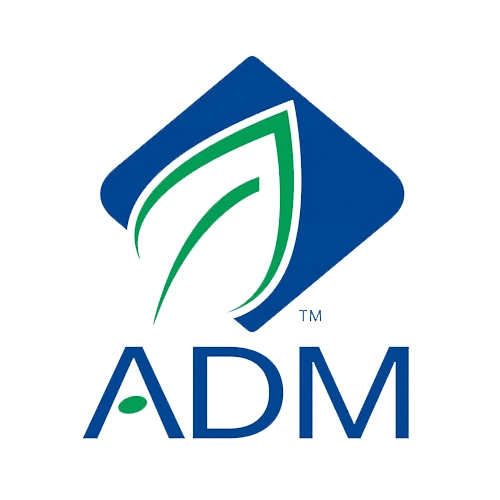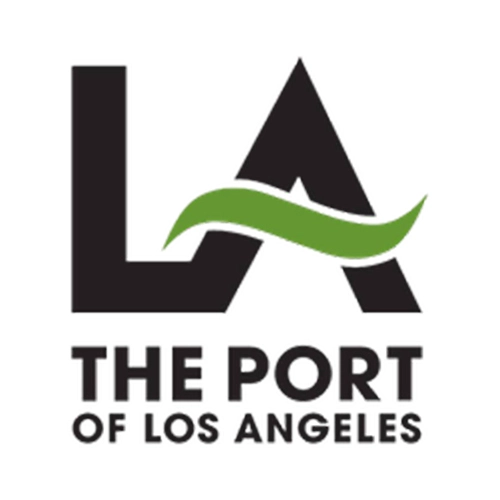
THE FUTURE OF TRAFFIC CONTROL: THE BENEFITS OF RADAR SPEED LIMIT SIGNS
The future of traffic control is rapidly evolving, and one technology that is gaining traction is radar speed limit signs. These innovative signs utilize advanced radar technology to monitor and display the speed of approaching vehicles, providing real-time feedback to drivers. In this article, we will delve into the benefits of radar speed limit signs and explore how they can improve traffic safety.
How Radar Speed Limit Signs Improve Awareness
One of the key advantages of radar speed limit signs is their ability to effectively communicate the speed limit to drivers. With clear and visible displays, these signs grab the attention of motorists and serve as constant reminders to adhere to the posted speed limit. This proactive approach can help reduce instances of speeding and enhance driver awareness.
Additionally, radar speed limit signs have been shown to have a positive impact on driver behavior. Studies have found that these signs can lead to a significant reduction in speed and an increase in compliance with posted speed limits. By promoting safer driving habits, radar speed limit signs contribute to an overall safer road environment.
As traffic control technology continues to evolve, radar speed limit signs are paving the way for a more efficient and safer transportation system. Stay tuned as we explore the various benefits and applications of this cutting-edge technology in future articles.
The Importance of Traffic Control
The future of traffic control is rapidly evolving, and one technology that is gaining traction is radar speed limit signs. These innovative signs utilize advanced radar technology to monitor and display the speed of approaching vehicles, providing real-time feedback to drivers. In this article, we will delve into the benefits of radar speed limit signs and explore how they can improve traffic safety.
Traditional Speed Limit Signs vs Radar Speed Limit Signs
Effective traffic control plays a crucial role in ensuring the safety and efficiency of our roadways. Speeding has long been a major concern, contributing to a significant number of accidents and fatalities. Traditional speed limit signs, while informative, often fail to grab the attention of drivers and communicate the importance of adhering to the posted speed limit. This is where radar speed limit signs come into play.
How Radar Speed Limit Signs Work
Traditional speed limit signs have been the standard method of communicating speed limits to drivers for decades. However, research has shown that they are often ineffective in influencing driver behavior. Many drivers either fail to notice these signs or choose to ignore them. This lack of compliance with speed limits poses a significant risk to road safety.
On the other hand, radar speed limit signs utilize cutting-edge radar technology to detect and display the speed of approaching vehicles in real time. These signs are highly visible and eye-catching, grabbing the attention of drivers and serving as constant reminders to adhere to the posted speed limit. By providing instant feedback on vehicle speed, radar speed limit signs effectively communicate the importance of safe driving practices.
Benefits of Radar Speed Limit Signs
Radar speed limit signs employ radar technology to measure the speed of passing vehicles. The radar system consists of a sensor that emits radio waves and measures the time it takes for the waves to bounce back after hitting a moving vehicle. By analyzing the frequency shift of the reflected waves, the radar system can accurately determine the speed of the vehicle.
Once the speed is measured, the radar speed limit sign displays the information on a highly visible LED screen. The display is typically located near the speed limit sign, ensuring that drivers have a clear view of both the posted speed limit and their current speed. This real-time feedback encourages drivers to adjust their speed accordingly and promotes safer driving habits.
Increased Safety on the Roads
One of the most significant benefits of radar speed limit signs is their ability to enhance road safety. By effectively communicating the speed limit to drivers and providing real-time feedback on their speed, these signs actively contribute to reducing instances of speeding. Studies have shown that radar speed limit signs can lead to a significant reduction in speed and an increase in compliance with posted speed limits.
When drivers are aware of their speed and the posted speed limit, they are more likely to drive within the legal limits and exercise caution. This, in turn, reduces the risk of accidents and provides a safer road environment for all users. Radar speed limit signs are especially effective in areas with high accident rates or where speeding is a prevalent issue.
Improved Traffic Flow and Reduced Congestion
Radar speed limit signs not only enhance road safety but also contribute to improved traffic flow and reduced congestion. When drivers adhere to the posted speed limit, the flow of traffic becomes more consistent and predictable. This reduces the likelihood of sudden braking or lane changes, which can lead to traffic congestion and bottlenecks.
By promoting a smoother flow of traffic, radar speed limit signs help reduce travel time and improve overall road efficiency. This is particularly beneficial in areas with heavy traffic or during peak travel periods. The improved traffic flow also results in reduced fuel consumption and lower emissions, contributing to a more sustainable transportation system.
Cost-Effectiveness of Radar Speed Limit Signs
Implementing radar speed limit signs may require an initial investment, but they offer significant long-term cost savings. By reducing instances of speeding and related accidents, these signs help lower the costs associated with medical expenses, vehicle repairs, insurance claims, and emergency response services. Additionally, the improved traffic flow resulting from radar speed limit signs can lead to reduced wear and tear on road infrastructure, minimizing maintenance and repair costs.
Moreover, radar speed limit signs are designed to be durable and weather-resistant, requiring minimal maintenance. They are built to withstand various environmental conditions, ensuring reliable operation and longevity. The cost-effectiveness of radar speed limit signs makes them a worthwhile investment for municipalities and transportation authorities looking to improve road safety and optimize traffic control.
Improved Traffic Flow and Reduced Congestion
The implementation of radar speed limit signs has been successful in various locations across the globe. From urban areas to school zones, these signs have proven to be effective in reducing speeding and improving road safety.
For example, in the city of Edmonton, Canada, radar speed limit signs were installed in school zones as part of a pilot project. The results were promising, with a significant reduction in average vehicle speeds and improved compliance with speed limits. Similar success stories can be found in other cities and regions that have embraced this innovative technology.
The implementation of radar speed limit signs is relatively straightforward. Transportation authorities can choose the locations where these signs will have the most impact, such as high-risk areas or zones with frequent speeding incidents. By strategically placing radar speed limit signs, authorities can effectively communicate speed limits and encourage safer driving behavior.
Cost-Effectiveness of Radar Speed Limit Signs
As traffic control technology continues to evolve, radar speed limit signs are paving the way for a more efficient and safer transportation system. These signs effectively communicate the speed limit to drivers and provide real-time feedback on their speed, promoting safer driving habits and reducing instances of speeding. The benefits of radar speed limit signs extend beyond road safety, contributing to improved traffic flow and reduced congestion. With their cost-effectiveness and successful implementation in various locations, radar speed limit signs are proving to be a valuable tool in shaping the future of traffic control. Embracing this cutting-edge technology will undoubtedly lead to safer roads and a more sustainable transportation system for all.
Implementation and Success Stories
Radar speed limit signs offer a cost-effective solution for improving traffic control and reducing accidents. Unlike traditional speed limit signs, radar speed limit signs can actively monitor and display the speed of passing vehicles. This real-time feedback not only serves as a reminder to drivers but it also has been shown to effectively reduce instances of speeding.
One of the main advantages of radar speed limit signs is their ability to grab the attention of motorists. With bright and visible displays, these signs serve as constant reminders to drivers to adhere to the posted speed limit. This proactive approach can help reduce instances of speeding and enhance driver awareness, ultimately leading to a safer road environment.
The Advantages of Radar Speed Limit Signs
Another cost-effective aspect of radar speed limit signs is their durability and low maintenance requirements. These signs are designed to withstand harsh weather conditions and can function effectively for long periods without the need for frequent repairs or replacements. This translates to lower operating costs and greater efficiency in traffic control efforts.
In addition, radar speed limit signs can be easily integrated into existing traffic control systems. They can be mounted on existing signposts or poles, making installation a simple and straightforward process. This ease of implementation ensures that radar speed limit signs can be quickly deployed in areas where speeding is a prevalent issue, without the need for extensive infrastructure changes.
Overall, the cost-effectiveness of radar speed limit signs makes them an attractive option for improving traffic safety. Their ability to actively monitor and display vehicle speed, coupled with their durability and ease of implementation, makes them a valuable tool in reducing speeding and promoting safer driving habits.
The Impact of Radar Speed Limit Signs
The implementation of radar speed limit signs has seen success in various locations around the world. Many cities and municipalities have adopted this innovative technology as part of their traffic control initiatives, with positive results.
One such success story is the city of Springfield, which implemented radar speed limit signs on a busy downtown street. Before the installation of the signs, speeding was a common problem in the area, leading to numerous accidents and near-misses. However, after the radar speed limit signs were put in place, there was a noticeable decrease in speeding incidents, resulting in a safer and more pedestrian-friendly environment.
Radar Speed Limits Ensure Safer Roads in a Kentucky Community
Another success story comes from a small town in rural Kentucky. The town had been experiencing issues with speeding on a stretch of road that passed through a residential area. Traditional speed limit signs had proven ineffective in curbing speeding, so the town decided to install radar speed limit signs. The results were remarkable, with a significant reduction in speeding and an increase in compliance with the posted speed limit. The residents of the town reported feeling safer and more at ease, knowing that steps were being taken to address the speeding issue.
Conclusion
These success stories highlight the effectiveness of radar speed limit signs in improving traffic safety. By actively monitoring and displaying vehicle speed, these signs have proven to be an effective deterrent against speeding and have contributed to a reduction in accidents and injuries on the road.





















